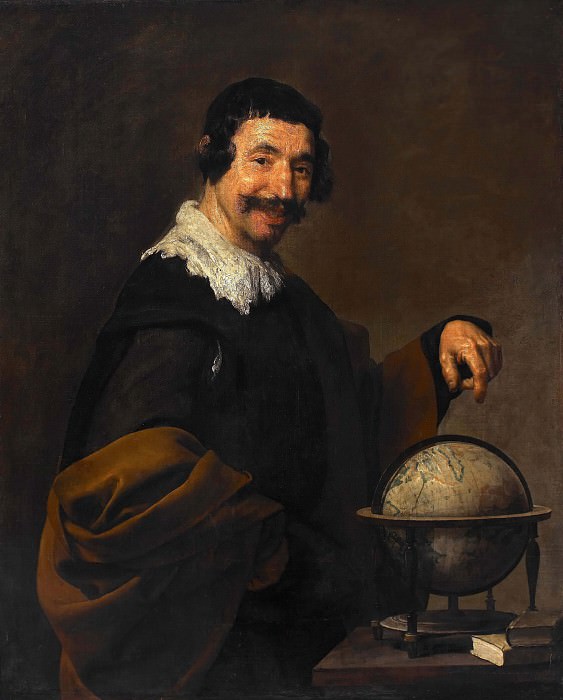Democritus Diego Rodriguez De Silva y Velazquez (1599-1660)
Diego Rodriguez De Silva y Velazquez – Democritus
Edit attribution
Download full size: 3377×4200 px (1,2 Mb)
Painter: Diego Rodriguez De Silva y Velazquez
Location: Fine Art Museum (Musée des Beaux Arts), Rouen.
Spanish artist Diego Velázquez painted a portrait of Democritus in 1629. Some art historians believe the painting was influenced by Rubens. In any case, there is no reason to deny Velázquez’s mastery of this beautiful work of art. Democritus lived in ancient times, even before Christ, in Greece. He belonged to the representatives of natural philosophy. The Spanish painter has depicted the philosopher in clothes that were not typical of his time.
Description of the painting "Democritus" by Diego Velazquez
Spanish artist Diego Velázquez painted a portrait of Democritus in 1629. Some art historians believe the painting was influenced by Rubens. In any case, there is no reason to deny Velázquez’s mastery of this beautiful work of art.
Democritus lived in ancient times, even before Christ, in Greece. He belonged to the representatives of natural philosophy. The Spanish painter has depicted the philosopher in clothes that were not typical of his time. Democritus looks in the picture as a contemporary of Velázquez. He is wearing tailored clothes, white elegant collar. This is how the ancient philosopher becomes closer and clearer to connoisseurs of Velázquez paintings in the 17th century.
Ancient Greek philosopher is shown to us not as a wise gray-bearded old man, but full of zadora man with adventurousness in his eyes. Democritus was known as the philosopher of "laughter. He laughed at the actions and attitudes of his contemporaries. The portrait easily reads this famous sarcastic grin.
On the canvas, the background is painted over with a thick layer of brown oil paint. The lighting falls on the figure of Democritus and the objects on the table. With the finger of his left hand the philosopher points to a large globe placed on the table. He has traveled quite a bit, so this object perfectly emphasizes the character’s personality. Books are lying very close by, showing the man portrayed as inquisitive, intelligent, deep-thinking.
The folds of fabric on the clothes are superbly worked on. The painting is also perfectly executed from an anatomical point of view. The man’s hand, his face with mimic wrinkles, mustache and hairstyle are depicted with great care and detail.
The ancient philosopher lived as a hermit, but Velázquez presented him as very pious. The elegant gentleman looks up at us from his portrait, pondering the discovery of another law of philosophy.
The painting is in Rouen, France, in the Musée des Beaux-Arts.
Кому понравилось
Пожалуйста, подождите
На эту операцию может потребоваться несколько секунд.
Информация появится в новом окне,
если открытие новых окон не запрещено в настройках вашего браузера.
You need to login
Для работы с коллекциями – пожалуйста, войдите в аккаунт (open in new window).











![Diego Rodriguez De Silva y Velazquez - Portrait of Queen Isabel [Attributed]](http://cdn.gallerix.asia/j/V/129426674/3933.webp)








You cannot comment Why?